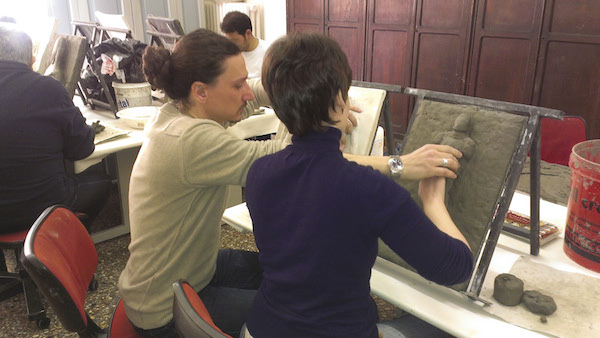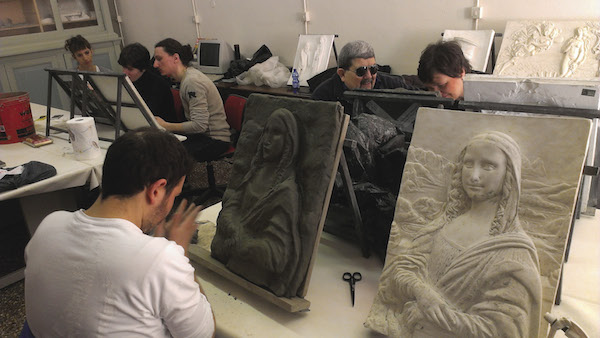Clay is a material that is malleable, natural, healthy and alive. Used since the Neolithic age in the production of votive pottery and statuettes, it is still considered today irreplaceable in artistic practice: in the wealth of polychrome ceramics, in the development of models in bas-relief, and in the preparation of preliminary sketches for sculptures in the round.
In one of the two versions of the Creation narrated in the Book of Genesis, man is fashioned by God created from earthy matter; as it is in numerous archaic themes. In the fifteenth-century Renaissance sculpture, clay was extensively used in the production of groups of devotional statues. Above all, clay is for man a reference to what is original and in an anagogical process, a return to oneself, and an invitation to inner transformation. And if materially clay, symbol of destruction for new construction, can be regenerated indefinitely, symbolically this process refers to the continuity of life cycles.
The Museum Anteros has for 15 years boasted a practice of clay modelling by visually impaired students of all ages to reinforce and complement the tactile exploration that takes place in the collection of translations in bas-relief of masterpieces of painting. The inclusive aesthetic education given in the Museum Anteros involves the reconstruction of plastic forms, before they are explored by touch by the blind and visually impaired students from kindergarten, and elementary and secondary schools. The service offered by the museum to schools is carried out in close collaboration with regular and support teachers for the development of perceptual abilities of tactile and visual-tactile nature to strengthen the haptic capacity as well as the multi-sensory skills and the sensitivity of children and teens.
Through the knowledge of simple and complex shapes, of regular and irregular geometries, of material of different weight and texture, static and dynamic, the perception of sensory-motor information and bimanuality are encouraged in order to enhance cognitive and imaginative functions essential to access symbolic thought. The exercise of modelling for the development of manual and creative skills is done through creative play, while learning specific concepts of space and body image provides a way of comparing models for representing reality which are useful to encourage the child to recognize familiar elements, the appropriation of the concept of graphic and plastic representation and the ability to understand images read through touch. The narrative function during the free modelling of clay should not be underestimated, neither should the dialogue that always supports and guides such experience.
To facilitate the development and strengthening of the cognitive and expressive skills of elementary school students who are blind and visually impaired, it is important to encourage them in their experience through proprioceptive and kinesthetic actions aimed at strengthening the processes of visualization, materialization, and restitution of mental images. In parallel to these focused activities, there are visits of school groups of sighted children who can explore through touch the museum's collection to then become familiar with the modelling of clay, creating free objects with their eyes closed. On these occasions, the visit to the tactile museum takes on integrative functions if within the group there is a student with visual impairment. Clay modelling is also an added value particularly for teens, youth and adults.
The forms and resonances of this practice are plenty, if only we think of the importance of working with the works of the great masters making them our own by studying and copying, as key educational and cognitive functions in the experience of art. It must be understood as the appropriation of a reference model to be internalized and recreated.
To learn the qualities of form, to assimilate content and recognize style, we need to study with professional sculptors able to transmit to visually impaired students the traditional techniques of sculpture modelling, and with experts in image education for persons living with vision loss. By going through an educational process, we in fact reach operational autonomy. This lab practice, however disciplined, facilitates socialization and constructive dialogue through knowledge and the sharing of vision systems, and in parallel it teaches, introspectively, how to win small and great resistance to change.
In the pleasure of artistic creation, we then discover that the life of forms, through constants and variables, lies in our intellectual and emotional resilience, and that it is of essence and nature.






.png)